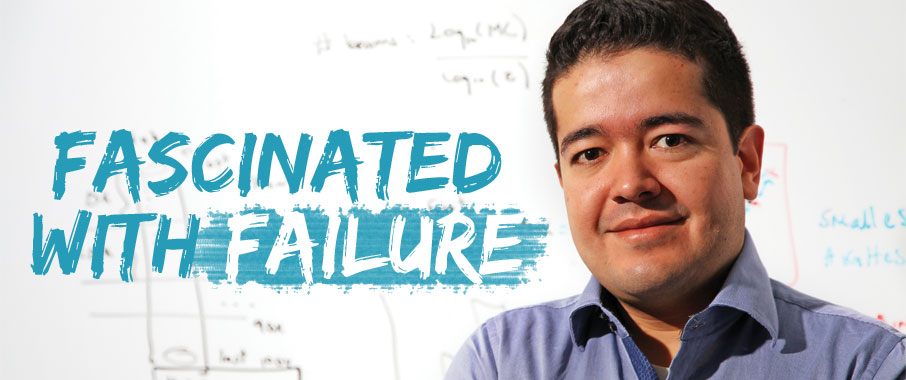


Everyone has failed at something at one time or another. Experiencing the failures of others has become a form of Internet entertainment. And avoiding failure is considered the smart thing to do. But, there’s smart and then there’s SMART. Juan Ocampo is the embodiment of one and the creator of the other.
Instead of avoiding failure, Ocampo looks for it every day. A Medellin, Colombia native, who will receive his mechanical engineering Ph.D. this summer, Ocampo is determined to cause as many failures as he can.
And, in so doing, save lives.
During both his master’s and Ph.D. studies at UTSA Ocampo has been one of the main developers of Small Aircraft Risk Technology (SMART), a computer code created for the Federal Aviation Administration (FAA), that uses flight data such as load, velocity and flight durations of small aircraft to analyze their configurations and determine their probability of failure. Through his work in probabilistic damage tolerance analysis for small airplanes, calculating the stresses a particular small aircraft design can endure over time, Ocampo can predict when a component is likely to fail. Based on that information, inspection and maintenance schedules can be developed to ensure the safety of the world’s aging general aviation fleet. There are approximately 150,000 such aircraft in the United States and more than 240,000 worldwide with an average age of 40 years.
That’s smart, but Ocampo also admits, he’s worked hard and been lucky.
The son of a businessman and a school teacher, Ocampo has always appreciated the value of education and knew he’d have to apply himself to accomplish his dream of becoming an engineer. “I’ve been fascinated with airplanes and flight since I was a child growing up in Colombia. My family moved to San Antonio after I earned my bachelor’s degree there. That’s when I learned about UTSA and got the opportunity to work with Dr. (Harry) Millwater.”
Millwater’s 20 years of experience in the application of probabilistic mechanics methods to aerospace components, aircraft structures and gas turbine engine disks were a perfect match for Ocampo’s curiosity. And as department chair, he’s been able to provide his student with numerous research and collaboration opportunities. The partnership between the two has been a successful one.
In 2009 Ocampo was awarded “Best Paper” at the AIAA Region IV Student Conference and was recognized by the FAA for outstanding achievement in aviation in 2011. He partnered with the Canadian National Research Council on the implementation and validation of a method for computing stress intensity factors and beta factor of collinear interacting cracks in 2011 and again in 2012 in probabilistic risk assessment methodology and application to aerospace structures. He has had two journal publications, 10 peer-reviewed paper presentations and three non-peer-reviewed presentations.
After graduation Ocampo will remain at UTSA as a research professor working on the probabilistic fatigue management program for general aviation.
“My goal,” says Ocampo, “is to contribute to the aviation field either with an aircraft manufacturer or a research institution.”
Smart. Very SMART.
– Randy Lankford